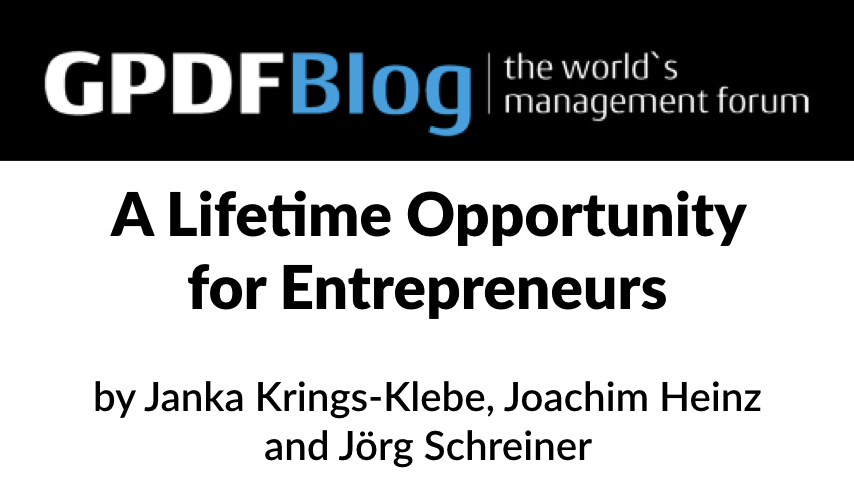The Future of Businesses – Marketplaces of Shared Capabilities
Some days ago, we read about Amazon’s latest acquisition, Whole Foods Market, an organic grocery chain. From the perspective of established business, a cross-industry acquisition like this is unexpected and seems somehow strange. From the perspective of Amazon’s goal, becoming “the marketplace for everything”, this acquisition was a logical step. Amazon aims to provide everything that makes life more convenient. This includes services of any kind. Amazon therefore does not limit its business operations on a single industry or market. It aims to cross-connect all services and markets into their business ecosystem. This different strategic perspective makes it easy to think outside of established markets. Then, cross-over innovation becomes the new normal in business operations.
Let’s step back for a moment and look at the fundamental changes brought along by digital markets. Of course, markets have always changed. Today this seems to happen with a global reach at an unprecedented pace and driven by new technology and connectivity. This change perpetually creates new types of business opportunities across domains and industries, with increasing speed and decreasing investment costs. All markets will have to deal with this dynamic sooner or later. We therefore call it the age of hyper-dynamic markets. In these markets, businesses need to look beyond their usual search patterns to find profitable opportunities, they need to do it at scale, and much faster to compete successfully. In addition, the time to profit from a new business opportunity becomes increasingly short: The time frame to identify the opportunity ahead of competitors, the time to “rally the troops”, i.e. to pull together resources and build a business operation dedicated to the new opportunity, and the time to earn money from it might also be much shorter than businesses are used to. Businesses today try very hard to improve innovation and become faster and more flexible in their operations in order to overcome these problems.
But very few get down to the fundamentals of what is really holding them back: They still rely on organizational structures that were built for repetition and stability, and not for cross-over innovation. These structures are not competitive enough when long-term success depends on the ability to pivot a business very fast towards more promising opportunities. Amazon and Chinese company Haier, the world’s leading brand of household appliances, impressively and repeatedly demonstrate this ability. Their success can not only be attributed to strong and visionary leadership, or their high-performance culture. There is something more, that makes these companies so incredible fast, flexible, and able to perform very well across a wide field of vastly different business operations.
It is an organizational structure based on principles of entrepreneurial autonomy and reusable services, largely aligned through digital interfaces. Amazon and Haier work like digital marketplaces of business services for entrepreneurs. Business operations can quickly be set up by combining a customized front-end operation with standardized back-end services. These back-end-services are readily available for any kind of business operation. They offer a comprehensive catalogue of basic services, like accounting, cloud storage, invoicing, payment, or shipping, that every business operation needs. They also offer a lot of specialized and unique services, like e.g. Amazon Wallet, or Haier’s open R&D partnership ecosystem HOPE. Each service in essence provides a high-performing business capability, that can easily be integrated into any kind of business operation. Combined, this business architecture can quickly gain track across a wide spectrum of markets or industries. It can explore much more business opportunities in parallel than traditional businesses. It can scale up profitable business operations much faster. It can very easily establish a system of distributed control and management that is much more efficient than traditional organizational structures.
Amazon and Haier today already provide a glimpse of the future of businesses. We at co-shift expect that businesses who work like a marketplace for entrepreneurs, sharing assets and business capabilities, will dominate markets in the digital age. We think that businesses today should carefully consider their own position: What role will they play in their market 10 years from now? Can they turn themselves into marketplaces for entrepreneurs, ready for innovation at scale?
 We have aggregated our in-depth insights in our book FUTURE LEGENDS – Business in Hyper-Dynamic Markets, offering a strategic blueprint for businesses to survive and profit in hyper-dynamic markets.
We have aggregated our in-depth insights in our book FUTURE LEGENDS – Business in Hyper-Dynamic Markets, offering a strategic blueprint for businesses to survive and profit in hyper-dynamic markets.
We will continue this series of articles.
Blog image:
„Night Market in Bangkok, Thailand“ by Aotaro
https://www.flickr.com/photos/aotaro/34407623185/ is licensed under a Creative Commons license: https://creativecommons.org/licenses/by/2.0/










